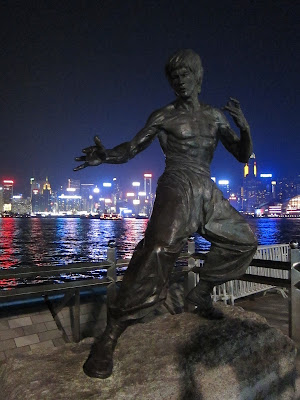Indonesia is an archipelago composed of 13.466 islands! Sumatra is the biggest one, located at the extreme west of the country, just south of the Malay Peninsula. We landed at Medan, the main city of Sumatra, to take a bus the next day in direction of Sumatra's main attraction: Toba Lake.
The 150 kilometres journey lasted six hours: half an hour in a taxi from our hotel to the bus station, four hours and a half in a crowded bus without any ventilation and an hour in a boat from Parapat to the island in the middle of Toba Lake.
This lake was formed in the crater of a supervolcano which errupted more than 70.000 years ago, creating a volcanic winter on the globe. Lake Toba is 100 kilometres long and 30 kilometres wide: the largest lake in Indonesia and the largest volcanic lake in the world!!
An island was formed by a resurgent dome in the centre of the lake: Samosir island, 630 kilometres square. Well technically it is an island within an island.. Funny to think about that! ;)
We rent a scooter to admire scenic tropical countryside and mountainous panoramas, not to mention homemade fish traps and buffalos bathing in the glittering waters of the lake which definitively looks more like a sea. Only the spray is missing.
The Batak people populates this island. They were once real cannibals, eating their ennemies after war victories. They are now on a different diet and more peaceful! Traditionnal Batak houses are easily recognized with their pointed curved roof.
Many european missionaries took over from each other (Dutch, British, etc.) and the protestant christianism grew on to become the local cult but tinged with ancestral animist traditions. Along the road, a church or a colorful tomb with strange architecture pop up every kilometre.
Church
Tombs
Funerary monument
Some Batak ancient vestiges are still visible: the Stone Chairs (surprisingly tiny) where a former king ruled and sentenced to death, a decapitation place and a few wood and stone statues.
Another things amazed us on the road: at every working hour of the day, children in uniform are walking out (or going in??) their schools. We did not understand if they had different schedules because they are so numerous. One thing is for sure, Batak people can count on its future generation!
School bus
Playing after school
In brief, a divine world to rest for a few days!!





























































